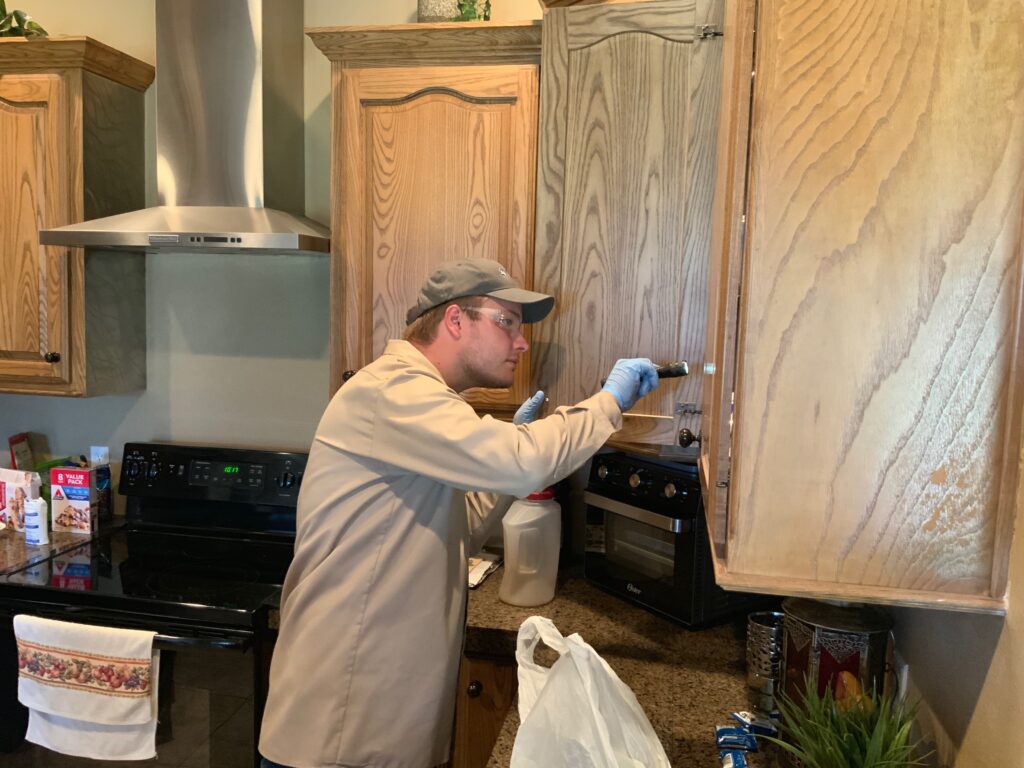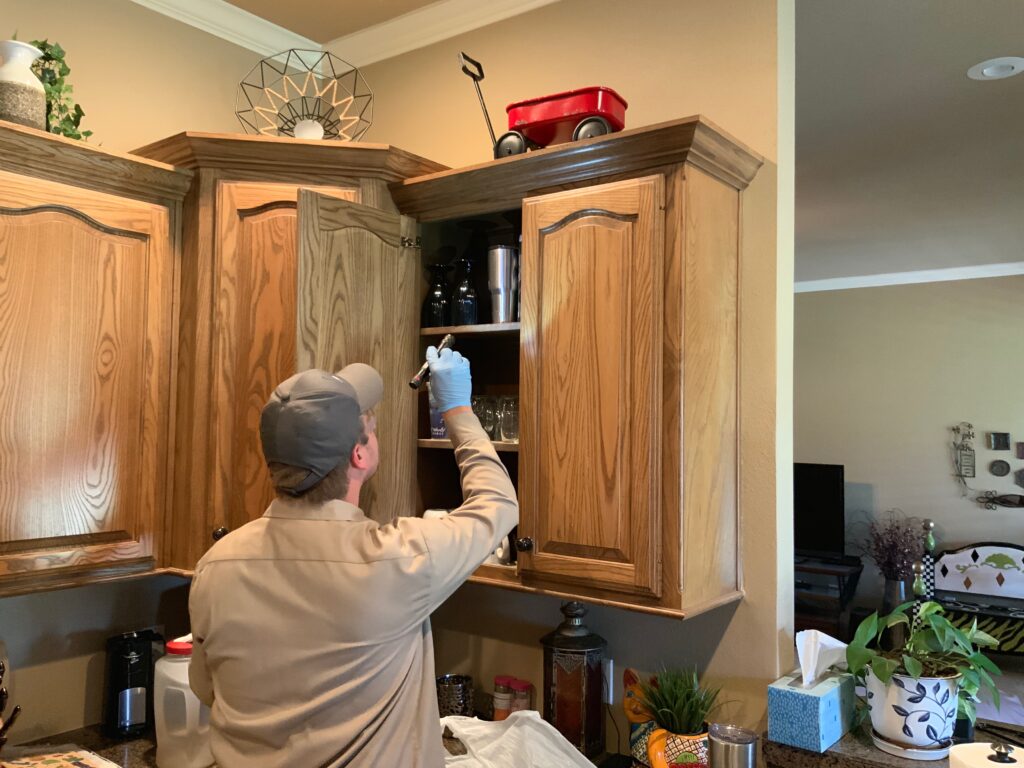
Effective German Cockroach Treatment
Interior treatments for German cockroaches are applied throughout your residence, especially in the kitchen. We are focused on the safety of your family, pets and belongings. Methods may include the use of aerosols, gel baits, foaming, dusting, glue boards, and insect growth regulators. Service includes a 2-week follow-up.
**There is a required customer preparation before we perform this service.

The German cockroach, which is only found indoors, is best identified by its small size and by two dark parallel lines running from the back of the head to the wings.
The German cockroach was once the No. 1 pest in residential and commercial buildings.
All pesticides used by a licensed pest control company are child-friendly and pet-friendly when dry.
1. German cockroaches have a phenomenal rate of reproduction. One female cockroach and her offspring can theoretically produce hundreds of thousands of cockroaches in just one year! To prevent a population increase the service has to be frequent enough to stay ahead of the growth curve.
2. German cockroaches love heat and humidity. Cockroaches prefer a temperature of 85° to 95° F with a humidity at 90 to 95% (although they do quite well at normal room temperatures and humidities, too). Within a given room, cockroaches will be concentrated where the temperature or humidity is highest, such as above refrigerators and other heat-generating equipment, under the sink, and around water pipes (hot water pipes provide warmth, cold water pipes provide water from condensation).
3. German cockroaches spend most of their lives hidden and protected. For every cockroach in view in daytime, hundreds can be hidden inside wall and ceiling voids, behind cabinets, inside appliances, and the like. A German cockroach’s favorite location is inside a narrow crevice with its antennae extended out. Typical “prime” locations are the cracks between cabinets and walls, the flange under the kitchen sink, and the space between door corners and jambs.
4. German cockroaches protect their egg cases.The female German cockroach carries her egg case for as long as a month, dropping it just before it hatches. While she is carrying the egg case, the female German cockroach is less active and tends to stay hidden away in cracks and crevices and protected voids. This is why we do a scheduled follow-up treatment to control newly-emerged nymphs.
5. German cockroach egg capsules are not susceptible to insecticides. Most insecticides do not have the ability to penetrate the egg case, even if directly applied to the case. The unaffected egg cases will hatch days after treatment. This is another reason to have scheduled follow-up treatments in heavy infestations.
6. German cockroaches regularly disperse to new areas. Older, larger nymphs are most likely to disperse, followed by adult males and then adult females without egg cases. Small nymphs are least mobile. During an outbreak of German cockroaches, we will need to expand our search for cockroaches into adjacent rooms, even into sites that are not typically infested with German cockroaches.
7. German cockroaches detect and avoid many insecticides. Most over-the-counter insecticide sprays and dusts are a repellent to a greater or lesser degree. If cockroaches are repelled by a treated surface, they are not likely to contact the insecticide long enough to pick up a toxic dose.
8. German cockroaches can develop resistance to insecticides. When insects are exposed to an insecticide, the least susceptible may survive to pass on their “resistance” to their offspring. This resistance may be physiological or behavioral, as we learned recently with cockroach aversion to certain baits. Eventually, the insect cannot be controlled with that insecticide, sometimes not even with related insecticides they have never been exposed to before (cross resistance). To prevent control failures do not use over-the-counter products.